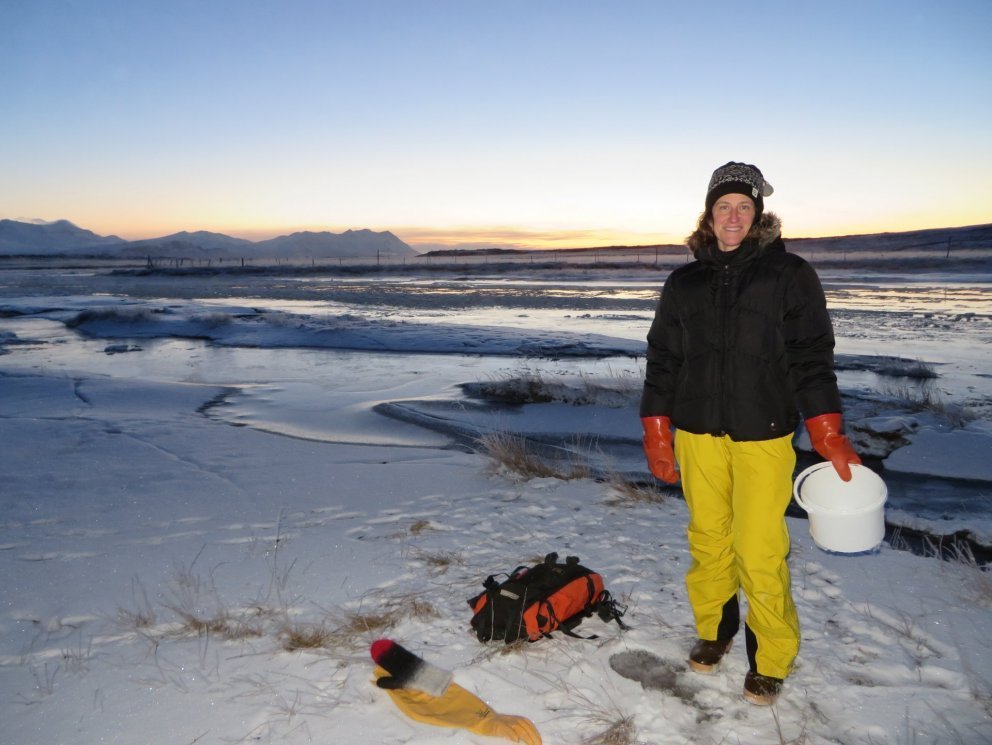- Research
- Fish tagging
- Lumpfish research
- Oceanography
- Seabed mapping
- Arnarfjörður
- Drekasvæði
- Ísafjarðardjúp
- Jökulbanki
- Jökuldjúp
- Kolbeinseyjarhryggur and adjacent area
- Kolluáll
- Langanesgrunn
- Látragrunn
- Nesdjúp
- Reykjaneshryggur and adjacent area
- Selvogsbanki
- South of Selvogsbanki
- South of Skeiðarárdjúp
- South of Skerjadjúp
- Southeast of Lónsdjúp
- Southwest of Jökuldjúp
- Suðausturmið
- Suðurdjúp
- Vesturdjúp
- East of Reykjaneshryggur
- Vestfjardarmid
- Seal research
- Whale Research
- Advice
- About
Jill Welter delivers a lecture at MFRI
18. September 2018
Dr. Jill Welter, professor at St. Catherine University, Minnesota, will give a lecture at MFRI on September 20. The lecture will be held in the 1st floor auditorium at Skúlagata 4, and will commence at 12:30 pm.
Abstract
Climate warming and eutrophication are two key drivers of global environmental change. Both influence physiological processes, species interactions, and biogeochemical cycling in ways that affect ecosystem processes; however, their synergistic effects are difficult to predict given the complexity of species responses to temperature and nutrient availability. Individual responses depend on differences in physiology and modes of nutrient acquisition, as well as thermal optima that influence the outcome of species interactions and ultimately ecosystem function. For example, nitrogen-fixing cyanobacteria can obtain essential nitrogen (N) from the atmosphere while non-N-fixing species may experience N-limitation. The nitrogenase enzyme complex has a high activation energy (AE = 2.18 eV), responding strongly to increases in temperature that can fuel ecosystem productivity when N-fixers are abundant. Increasing availability of dissolved inorganic N (DIN) should alleviate N-limitation of the biofilm assemblage, favoring non-N-fixing taxa and driving decreases in the temperature dependence of production. We evaluated the interactive effect of temperature and DIN availability on biofilm assemblage structure, metabolism and N uptake, including N-fixation, in a nitrogen-poor stream in Hengill, Iceland. Under N-poor conditions, N-fixation rates and N-fixer biomass (e.g., Nostoc spongiaeforme) increased significantly with temperature and biomass accumulation exhibited strong temperature dependence. With DIN addition, the temperature dependence of biomass accumulation declined and temperature-nutrient interactions resulted in various combinations of cyanobacteria, green algae, and diatoms, including dominance by the diatoms Melosira and Synedra in warm treatments. N-fixation rates declined with increasing DIN availability, while total N assimilation increased with temperature as a result of increased uptake of DIN by non-N-fixing diatoms, which compensated for declines in N-fixation. Many ecosystems are experiencing simultaneous warming and nutrient enrichment. Future trajectories for food web dynamics and nutrient cycling pathways will depend on the outcome of species interactions that determine food quality and quantity, as well as availability of limiting resources.

